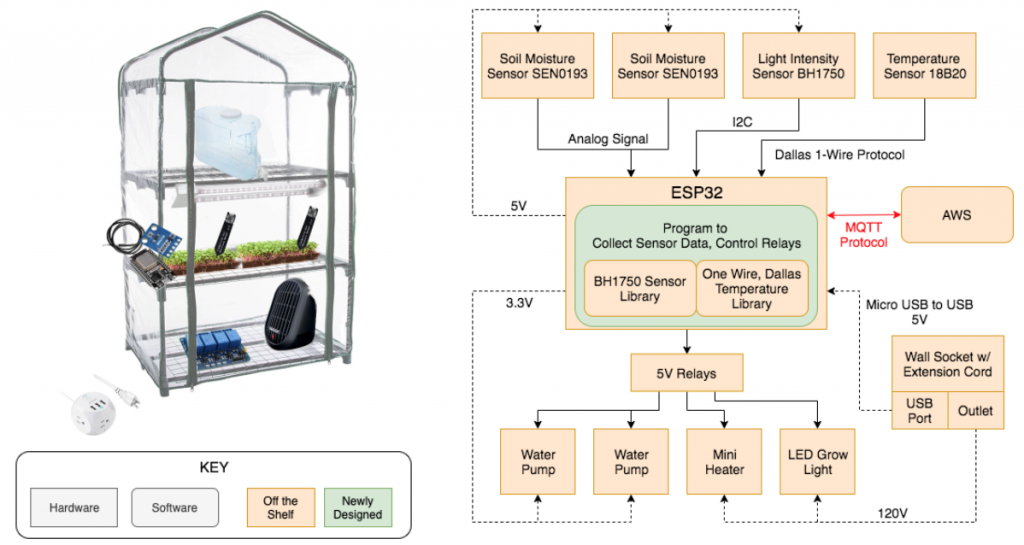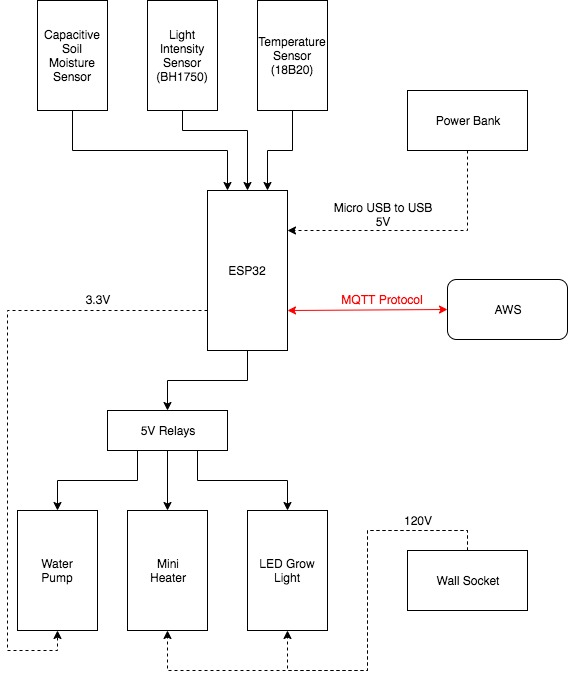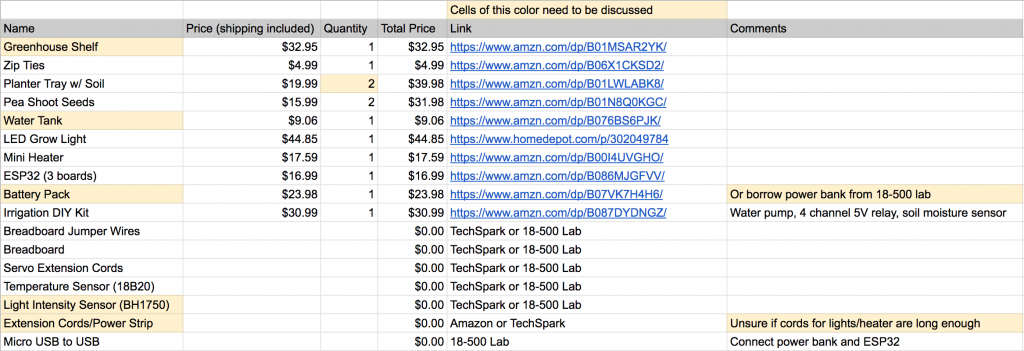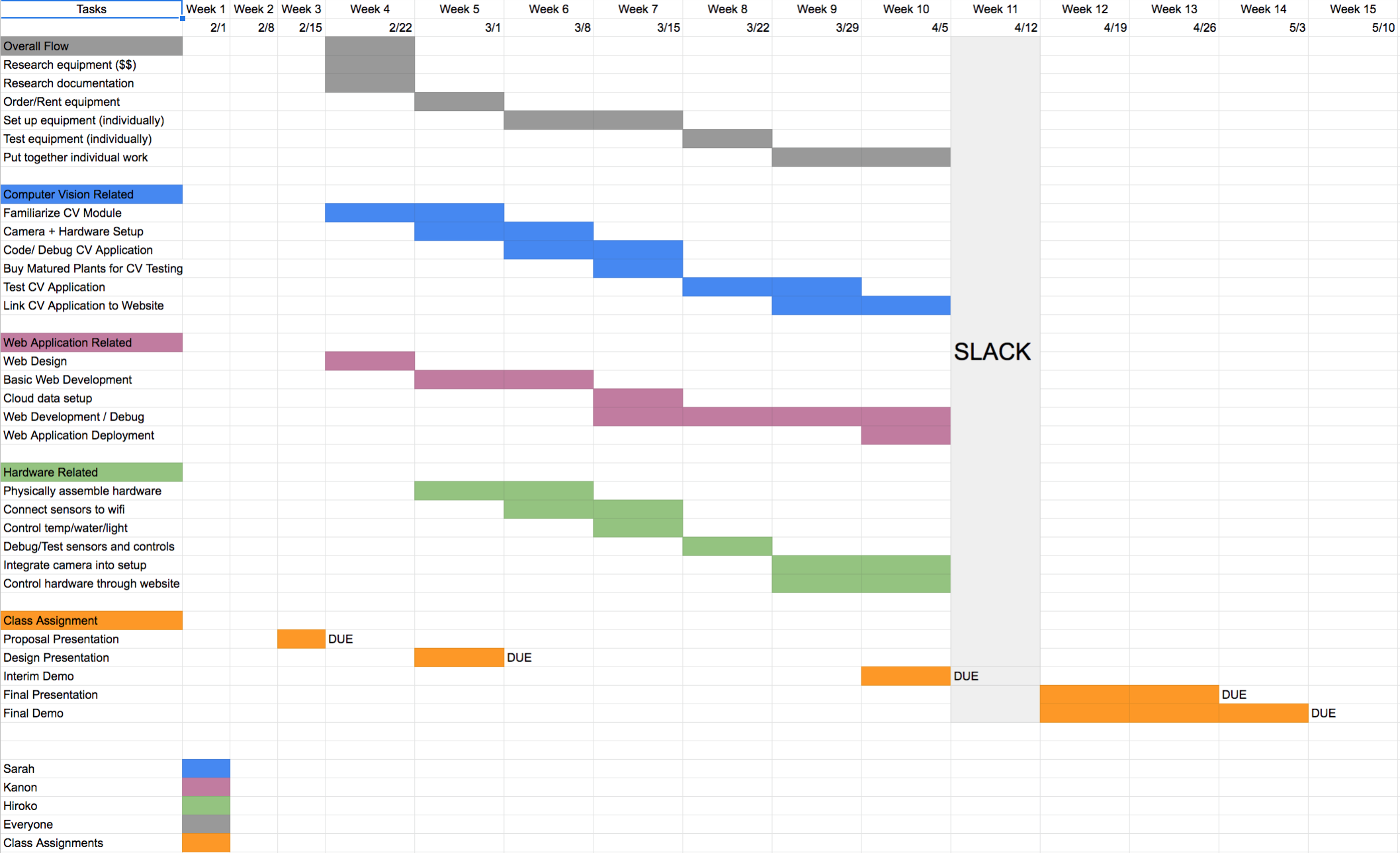This week, I continued to do more research on the specific types of sensors and equipment that we would need to physically build the greenhouse system. Using the information I gathered and the feedback we got from our weekly meeting with the instructors, I refined the shopping list and block diagram that I created last week. After that, I filled out the purchase request forms for the items on the updated shopping list, and filled out the form to request TechSpark access in order to wire the sensors to the ESP32 and solder the temperature sensor.
While processing our purchase request forms, Quinn contacted me about our order from Home Depot saying that it may be better for me to pick the items up directly from Home Depot since Home Depot uses their own drivers, which requires us to arrange a specific delivery date and time to receive the order. Therefore, I took the bus to the Wilkins Home Depot in order to pick up the LED plant grow lights on Friday. I was also able to drop by HH 1307 in order to pick up a breadboard and some wires on Friday as well.
Also, we spent time this week putting together the design review presentation slides. I added the slides that had to do with the hardware aspect of our project, and created a visual image of what I imagine the greenhouse will look like when it’s assembled.

Overall, I think I am on schedule. I’m hoping that the orders will start arriving next week, so that I can start assembling the greenhouse and programming the ESP32 boards. I will also be working on the design review report next week with my teammates.



